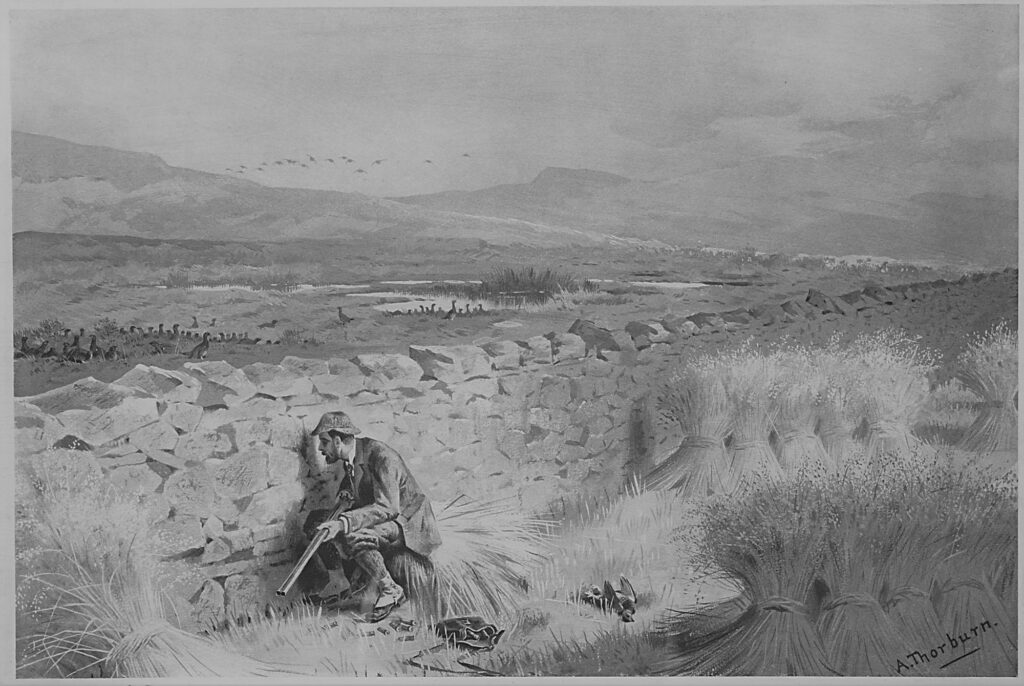The Pinnated Grouse was once abundant and widespread in America, all across the oak savanna and tall grass prairie ecosystem. This prairie chicken was numbered in the millions.
In the 1930s the Pinnated Grouse became almost extinct in the US but, with protection and careful breeding, this beautiful grouse has started to recover its numbers.
“When I first removed to Kentucky [1808, Ed.], the Pinnated Grouse were so abundant, that they were held in no higher estimation as food than the most common flesh, and no “hunter of Kentucky” deigned to shoot them.
“They were, in fact, looked upon with more abhorrence than the Crows are at present in Massachusetts and Maine, on account of the mischief they committed among the fruit trees of the orchards during winter, when they fed on their buds, or while in the spring months they picked up the grain in the fields.
“The farmer’s children, or those of his negroes, were employed to drive them away with rattles from morning to night, and also caught them in pens and traps of various kinds.
“In those days, during the winter, the Grouse would enter the farm-yard and feed with the poultry, alight on the houses, or walk in the very streets of the villages. I recollect having caught several in a stable at Henderson, where they had followed some Wild Turkeys.
“In the course of the same winter, a friend of mine, who was fond of practising rifle-shooting, killed upwards of forty in one morning, but picked none of them up, so satiated with Grouse was he, as well as every member of his family.
“My own servants preferred the fattest flitch of bacon to their flesh, and not unfrequently laid them aside as unfit for cooking.”
Twenty-five years later, Audubon noted in his diary that the Grouse were rapidly disappearing from the landscape, and had become increasingly rare.
“Such an account may appear strange to you, reader; but what will you think when I tell you, that, in that same country, where, twenty-five years ago they could not have been sold at more than one cent apiece, scarcely one is now to be found?
“The Grouse have abandoned the State of Kentucky, and removed (like the Indians) every season farther to the westward, to escape from the murderous white man.
“In the Eastern States, where some of these birds still exist, game-laws have been made for their protection during a certain part of the year, when, after all, few escape to breed the next season.
“To the westward you must go as far at least as the State of Illinois, before you meet with this species of Grouse, and there too, as formerly in Kentucky, they are decreasing at a rapid rate.
“The sportsman of the Eastern States now makes much ado to procure them, and will travel with friends and dogs, and all the paraphernalia of hunting, a hundred miles or more, to shoot at most a dozen braces in a fortnight; and when he returns successful to the city, the important results are communicated to all concerned.
“So rare have they become in the markets of Philadelphia, New York and Boston, that they sell at from five to ten dollars the pair.
“An excellent friend of mine, resident in the city of New York, told me that he refused 100 dollars for ten brace, which he had shot on the Pocano mountains of Pennsylvania.”
The decline of the Pinnate Grouse was rapid and a friend of Audubon wrote: “Fifteen or twenty years ago, I know from my own experience, it was a common thing to see as many birds in a day as we now see in a week.”
The Pinnated Grouse was a great pest to the farmers. The birds damaged the fruit trees; they ate the buds of the apple tree, and the branches of the trees broke from the weight of the many birds. The birds also ate the grapes and berries as they matured.
During the sowing season, the birds descended on the wheat and corn fields, eating all the seeds that had just been planted. As a result, they were treated like vermin by the farmers and ruthlessly hunted.

The gradual urbanisation of the prairies also contributed to a rapid decrease in numbers as their natural habitat was eroded and disappeared.
Thankfully, conservation measures are now in place to ensure the sustainability of the tiny natural population that still exists in the wild.
In Illinois, the Pinnated Grouse population is down to around 200 and in Missouri it is around 500 (numbers from 2019).
Breeding programs are also in place that will enable more adult birds to be released into the wild.
The scientific name of the Pinnated Grouse is Tympanuchus Cupido (T.C.).
There are three subspecies:
The subspecies Pinnatus and Attwateri are listed as critically endangered according to the IUCN Red List Categories.
Unfortunately, the subspecies Cupido has been extinct since 1930. But Audubon painted this bird in its natural habitat and this can be seen in Birds of America, Pinnated Grouse plate 186.
Source